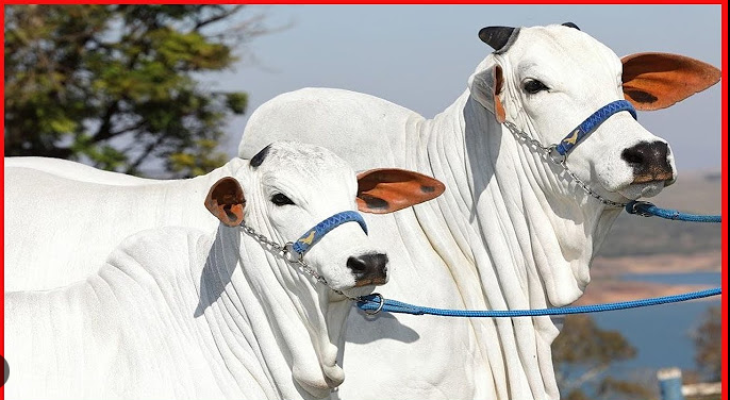Cattle Breeds in Pakistan
Cattle breeds play a vital role in the agricultural landscape of Pakistan. With its rich history and diverse culture, this region is home to some remarkable cattle varieties that have adapted over centuries. These animals are not just livestock; they represent heritage, livelihood, and resilience for countless communities.
From the lush green pastures to the arid terrains, each breed has unique characteristics suited to their environment. The significance of these cattle goes beyond mere farming; they hold a special place in local traditions and economies.
Indus Valley Civilization and its Impact on Cattle Rearing in Pakistan
The Indus Valley Civilization, one of the world’s earliest urban cultures, flourished around 2500 BCE in what is now Pakistan. This advanced society laid the groundwork for agricultural practices that included cattle rearing.
Cattle were essential to daily life and farming. They provided milk, draught power, and even dung for fuel and fertilizer. Archaeological findings have shown evidence of domesticated cattle in ancient settlements like Harappa and Mohenjo-Daro.
Today, many native breeds trace their lineage back to those times, reflecting a rich heritage intertwined with agriculture and culture. The influence of this ancient civilization continues to shape modern livestock management practices across Pakistan.
The Importance of Cattle Breeds in Pakistani Culture and Economy
Economically, these animals are essential for livestock farmers. Cattle contribute to the dairy industry by providing milk—an integral part of Pakistani diets and cuisine. Products like yogurt and ghee are staples that rely heavily on this rich resource.
Cattle play a vital role in agriculture. They help plow fields and transport goods, making them indispensable assets for rural livelihoods. The trade of native breeds also boosts local economies as they attract both national and international buyers interested in unique genetics.
The spiritual connection with cattle further enhances their importance; rituals often feature these animals prominently. This deep bond reflects Pakistan’s agrarian roots while highlighting the need for sustainable practices to ensure their longevity in society.
Top 5 Native Cattle Breeds in Pakistan
Pakistan is home to diverse cattle breeds, each with unique traits and characteristics.
The Sahiwal breed stands out as one of the most famous. Known for its high milk production, this zebu-type cow is well-adapted to the hot climate.
Tharparkar, a dual-purpose breed. It offers both excellent milk yield and good draught power, making it highly valuable in rural areas.
Then there’s the Red Sindhi, recognized for its resilience and ability to thrive on less fodder. This breed is also known for producing quality milk rich in fat content.
Another notable mention is the Cholistani, often used for plowing fields due to its strength and endurance. Its adaptability makes it a favorite among farmers.
We have the Bhagnari breed, prized not only for beef but also for its ability to withstand harsh environmental conditions. Each of these breeds plays a vital role in sustaining livelihoods across Pakistan’s agricultural landscape.
Threats to the Survival of Native Cattle Breeds
Native cattle breeds in Pakistan face numerous threats that jeopardize their survival. One of the most pressing issues is crossbreeding with imported varieties, which dilutes genetic traits unique to indigenous breeds.
Urbanization plays a significant role too. As cities expand, traditional farming lands shrink, leading to fewer resources for native cattle rearing. This shift often prioritizes high-yield commercial breeds over local varieties.
Economic factors cannot be overlooked either. Farmers may prefer more profitable options, leaving native breeds behind due to lower market demand and perceived productivity disadvantages.
Efforts for Conservation and Preservation of Pakistani Cattle Breeds
Research plays a critical role too. Genetic studies help identify traits that make these breeds unique and valuable for agriculture. Preservation programs aim to enhance genetic diversity while ensuring that traditional practices continue.
Breeders are encouraged to participate in exhibitions and fairs. Such events provide a platform for showcasing local cattle breeds, fostering pride within communities. They also attract potential buyers who appreciate the value of indigenous livestock.
Community engagement is vital as well. Training workshops equip farmers with knowledge about sustainable farming practices, helping them integrate conservation into their daily routines without sacrificing productivity or income.
Conclusion and Future Outlook
Today, Pakistani cattle breeds like Sahiwal, Fateh Jangi bull breed, Tharparkar, Red Sindhi, Cholistani, and Buni are not just livestock; they symbolize resilience and adaptability. These animals are well-suited to the diverse climates found across Pakistan’s landscapes. Their significance extends beyond their economic value as they are integral to rural life and customs.
Looking ahead, there is hope that with increased focus on sustainable agricultural techniques combined with community engagement, we can ensure a future where Pakistan’s native cattle continue thriving alongside modern advancements in farming technology. This balance will be crucial in maintaining both our cultural identity and economic stability through robust livestock populations capable of adapting to new challenges.

